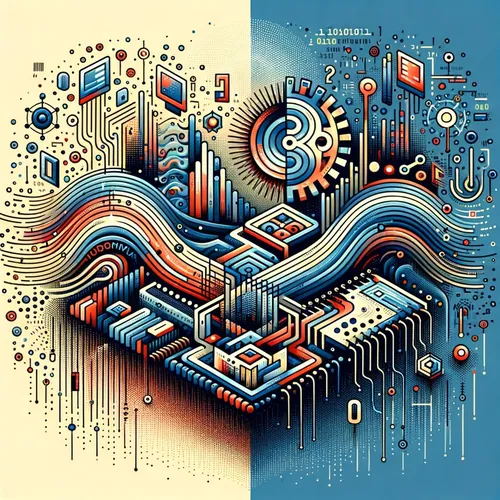Quantum Milestone: Certified Randomness Unleashes New Era of Possibility
- Author
- Quiet. Please
- Published
- Sun 20 Apr 2025
- Episode Link
- https://www.spreaker.com/episode/quantum-milestone-certified-randomness-unleashes-new-era-of-possibility--65642191
This is your Quantum Tech Updates podcast.
Welcome back to Quantum Tech Updates. I’m Leo, your Learning Enhanced Operator, and in the quantum realm, today is electric with possibility. This week, the air in our labs feels distinctly charged—like the moment before a thunderstorm when nature seems to pause, anticipating transformation. That’s exactly what’s happening in quantum computing right now. We’ve just crossed a threshold that accelerates everything: the realization of certified quantum randomness on an industrial quantum device.
Picture this: In late March, an international team, including quantum theorist Scott Aaronson, announced a breakthrough using Quantinuum’s System Model H2. Their upgraded trapped-ion processor, now boasting 56 qubits, partnered with JPMorganChase’s tech research team to execute Random Circuit Sampling—a task purposely designed to outpace any classical computer. The results? The H2’s fidelity and all-to-all qubit connectivity didn’t just nudge the bar forward; it catapulted us ahead by a factor of 100 over previous results. That’s like swapping a horse-drawn carriage for a supersonic jet overnight. In technical terms, the demonstration proved that no classical computer on Earth could have feasibly matched the outcome. This isn’t just a theoretical sprint. It’s a new marathon track laid down in real time, with industry giants—from finance to manufacturing—lining up at the starting blocks.
Let’s make sense of why this matters. For decades, quantum bits—qubits—have been the elusive atoms of our new digital universe. While a classical bit is a light switch, on or off, a qubit is the sunrise, painting every hue in between and all at once. But scaling these up, and keeping them pristine, is like herding fireflies in a tornado. Certified quantum randomness is the sign we’re not just catching the fireflies—we're guiding their dance. Imagine the randomness behind encryption keys. Classical computers use algorithms, which, if you know the recipe, you can predict. Quantum-certified randomness is fundamentally unpredictable—even if you know every starting condition. That’s a new fortress wall for cyber-security.
This is no isolated feat. The milestone is supported by the world-leading facilities at Oak Ridge, Argonne, and Lawrence Berkeley National Labs, each a cathedral of computation humming with possibility. Industry voices, like Dr. Rajeeb Hazra of Quantinuum, are calling this the dawn of quantum’s practical age. And for good reason: this breakthrough lays groundwork for robust quantum security and complex simulation—two pillars set to redefine logistics, drug discovery, and financial modeling.
Now, let’s zoom out to this week’s broader landscape. There’s tangible excitement worldwide for hybrid quantum-classical systems. In 2025, integration is accelerating, with sectors like pharmaceuticals and logistics trialing quantum solutions at industry scale. IBM’s Quantum System Two opening in Chicago, Nvidia and Google’s ongoing collaborations—these headlines aren’t abstract. They’re the visible ripples of a deep wave of progress. And in finance, the industry is pivoting to quantum as a competitive edge—tracking logical qubits, pushing error correction, and preparing for applications that, until recently, sounded like science fiction.
Here’s the metaphor I keep coming back to: today’s quantum hardware milestone is like switching from painting in black and white to full-spectrum color. Classical bits give us outlines; qubits swirl in all hues, offering new textures, depth, and complexity. As we increase the number of reliable, error-corrected logical qubits, we’re not just making computers faster; we’re changing the very language of problem-solving.
Working in the quantum lab is exhilarating and strange. The chilled whisper of cryostats, the flicker of lasers nudging ions, the dense hum of researchers arguing over the properties of...
